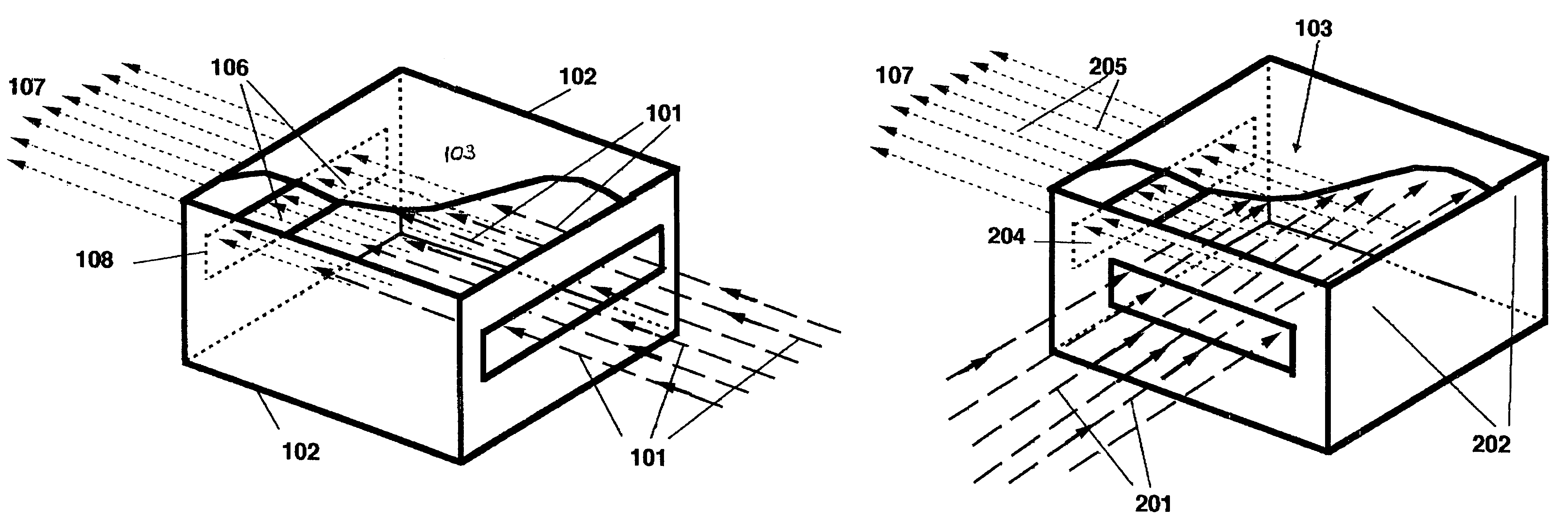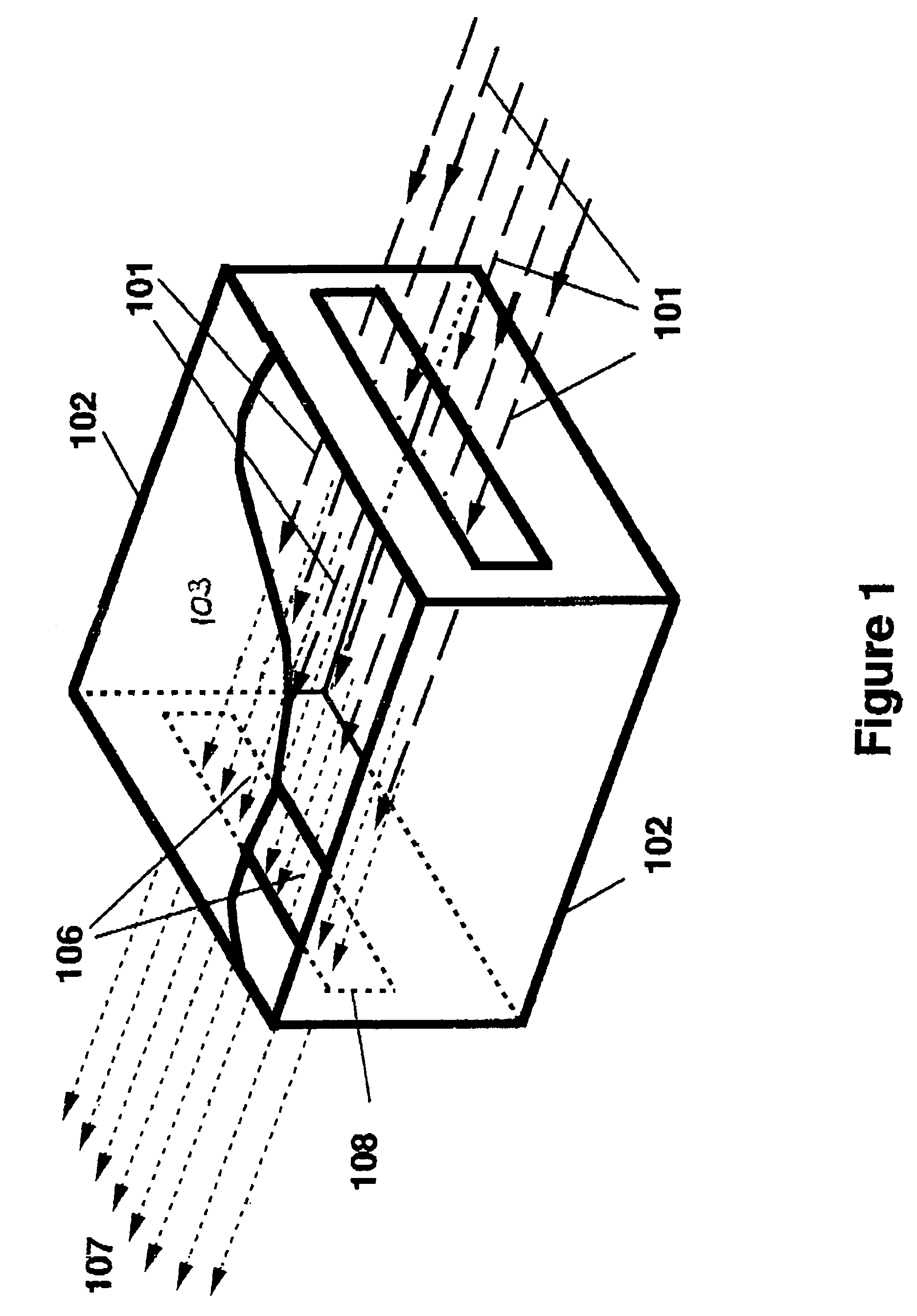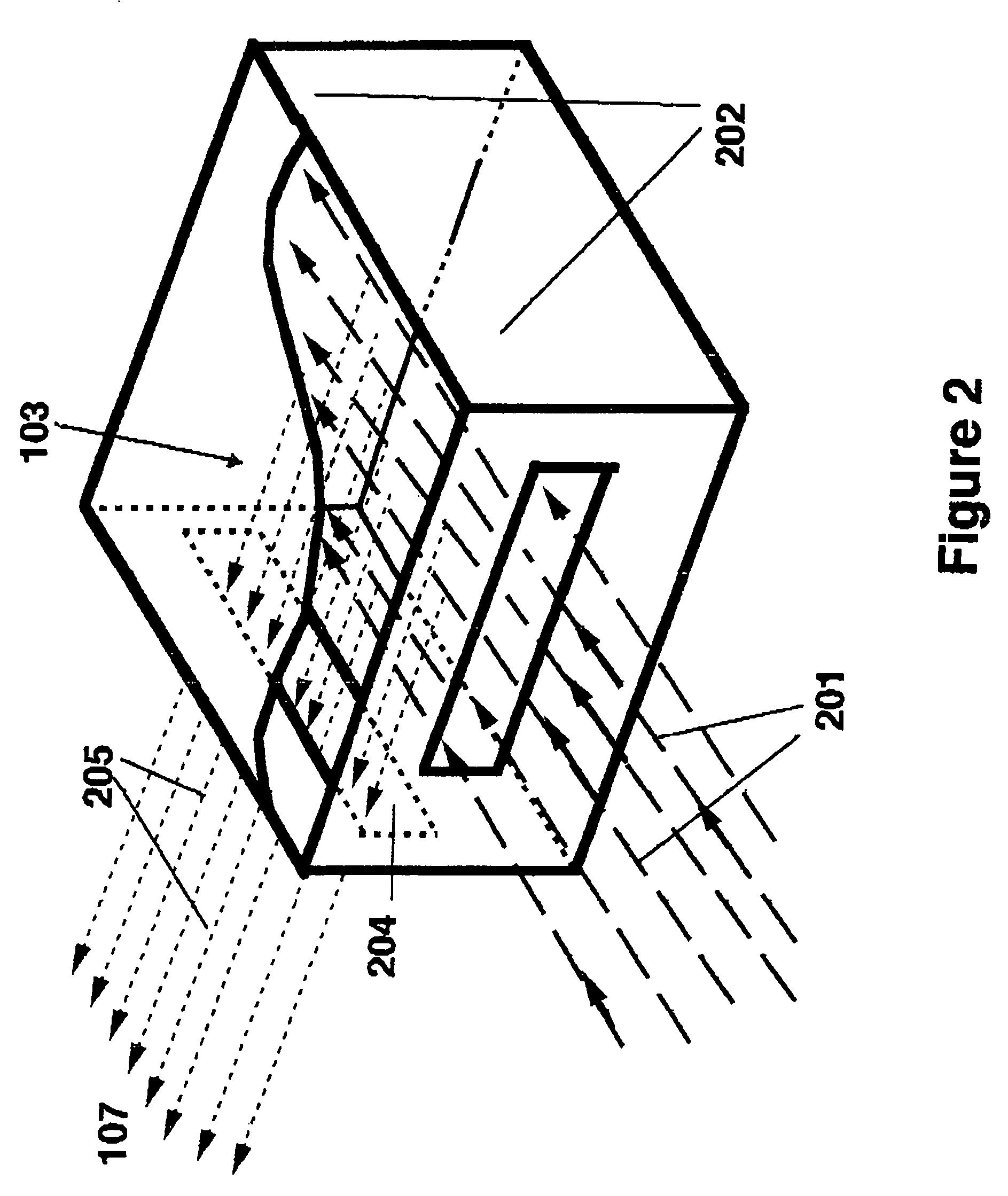Resonance method for production of intense low-impurity ion beams of atoms and molecules
a low-impurity ion and beam technology, applied in the direction of instruments, electric discharge lamps, material analysis, etc., can solve the problems of ineffective process at low particle velocities, high beam currents of parent elements, and substantial difficulty in extracting and transporting beams of such low-energy ions
- Summary
- Abstract
- Description
- Claims
- Application Information
AI Technical Summary
Benefits of technology
Problems solved by technology
Method used
Image
Examples
Embodiment Construction
[0038]Referring to the drawings, and first to FIG. 1 thereof, therein is shown a primary ion beam, 101, entering a cell, 102, and passing through a gas or vapor, 103, contained within the cell. Either negative or positive ions can be used as the primary ion beam, 101, which can be either atomic or molecular. Within the cell, 102, the sample, 103, is maintained in a gaseous or vapor form at an appropriate vapor pressure. If necessary, temperature control may be needed using suitable heaters or refrigerators. The primary ion beam species, 101, is chosen so that the electron affinity or ionization potential of the ion species, 101, is approximately equal to the electron affinity or ionization potential of the atom or molecule comprising the gas or vapor, 103, that is to be converted to negative or positive ions. The resulting ions, 106, are extracted longitudinally from the opposite side of the cell from that where the primary ion beam enters and is formed into a suitable ion beam, 107...
PUM
 Login to View More
Login to View More Abstract
Description
Claims
Application Information
 Login to View More
Login to View More - R&D
- Intellectual Property
- Life Sciences
- Materials
- Tech Scout
- Unparalleled Data Quality
- Higher Quality Content
- 60% Fewer Hallucinations
Browse by: Latest US Patents, China's latest patents, Technical Efficacy Thesaurus, Application Domain, Technology Topic, Popular Technical Reports.
© 2025 PatSnap. All rights reserved.Legal|Privacy policy|Modern Slavery Act Transparency Statement|Sitemap|About US| Contact US: help@patsnap.com



